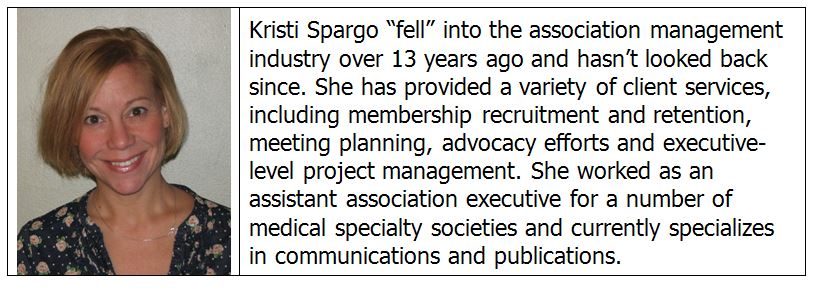By: Kristi Spargo
There’s always one. You know who it is. Shortly after a new member joins the board everyone is up in arms. Whispers of contention ripple throughout the ranks and the battle lines are being drawn. Issues that you never even knew were issues suddenly have the potential to implode the inner workings of your association. In the eye of the storm stands: The Difficult Board Member. As staff, it can be challenging to determine when and how to step in to keep the business of the association moving forward without getting bogged down in the personality politics. Boards are made up of professionals of many different personality types who donate their time for the good of the cause; it would definitely not be conducive to say “Nah, no thanks” to the difficult board member who wants to volunteer their service. So what’s the answer?
Pass the Baton
Sometimes in life you end up in a situation when someone unexpectedly hands you a baton and tells you to “GO! ” You think to yourself, wait, what? Why am I holding a baton? I didn’t sign up for this. Well, think of the difficult board member as your baton. It’s now yours to deal with and you have to keep moving forward. Some options are to bide your time until they cycle out of leadership. Or you can ask your president or chair to get involved and neutralize potentially damaging situations. A volunteer might respond better to a colleague, especially one that is high-ranking, more than staff. Perhaps you should also consider that the difficult board member might just have a hard time communicating with YOU. In this scenario you can take a hit to your pride and have another staff member be their primary contact.
” You think to yourself, wait, what? Why am I holding a baton? I didn’t sign up for this. Well, think of the difficult board member as your baton. It’s now yours to deal with and you have to keep moving forward. Some options are to bide your time until they cycle out of leadership. Or you can ask your president or chair to get involved and neutralize potentially damaging situations. A volunteer might respond better to a colleague, especially one that is high-ranking, more than staff. Perhaps you should also consider that the difficult board member might just have a hard time communicating with YOU. In this scenario you can take a hit to your pride and have another staff member be their primary contact.
Planned Self-Implosion
If a board member is causing too many disruptions or arguments among leadership, one way to avoid a major unforeseen blow-out and its repercussions is to plan a self-implosion. If an explosion is going to happen anyway, you might as well take some measure of control and guide the grenade. Plan a time to sit down with the board member in person or on the phone, preferably bringing in another member of your leadership, and have a frank discussion. Determine their motivation. Often these leaders just lack a better understanding of the history behind previous decisions and are not intentionally trying to be counterproductive. Ask for more details about what it is they are unsatisfied with, be willing to express your concerns about their approach and bring suggestions on how to better collaborate for the good of the association.
Perpetuate the Peace
Never forget that the difficult board member is a volunteer. It is part of your paid position to handle all aspects of running the association.  On the other hand, they are working with the association because of their good will and desire to better the profession. They have another job on top of their volunteer work. So no matter what their personality type or leadership style is, view this challenging dynamic as an opportunity to better your association management skills and develop innovative ways to create positive results. The next time you see their phone number pop up, don’t sigh and hit decline. Remind yourself that without volunteer leaders, you wouldn’t have an association to run. Then take a deep breath and graciously answer the phone.
On the other hand, they are working with the association because of their good will and desire to better the profession. They have another job on top of their volunteer work. So no matter what their personality type or leadership style is, view this challenging dynamic as an opportunity to better your association management skills and develop innovative ways to create positive results. The next time you see their phone number pop up, don’t sigh and hit decline. Remind yourself that without volunteer leaders, you wouldn’t have an association to run. Then take a deep breath and graciously answer the phone.





